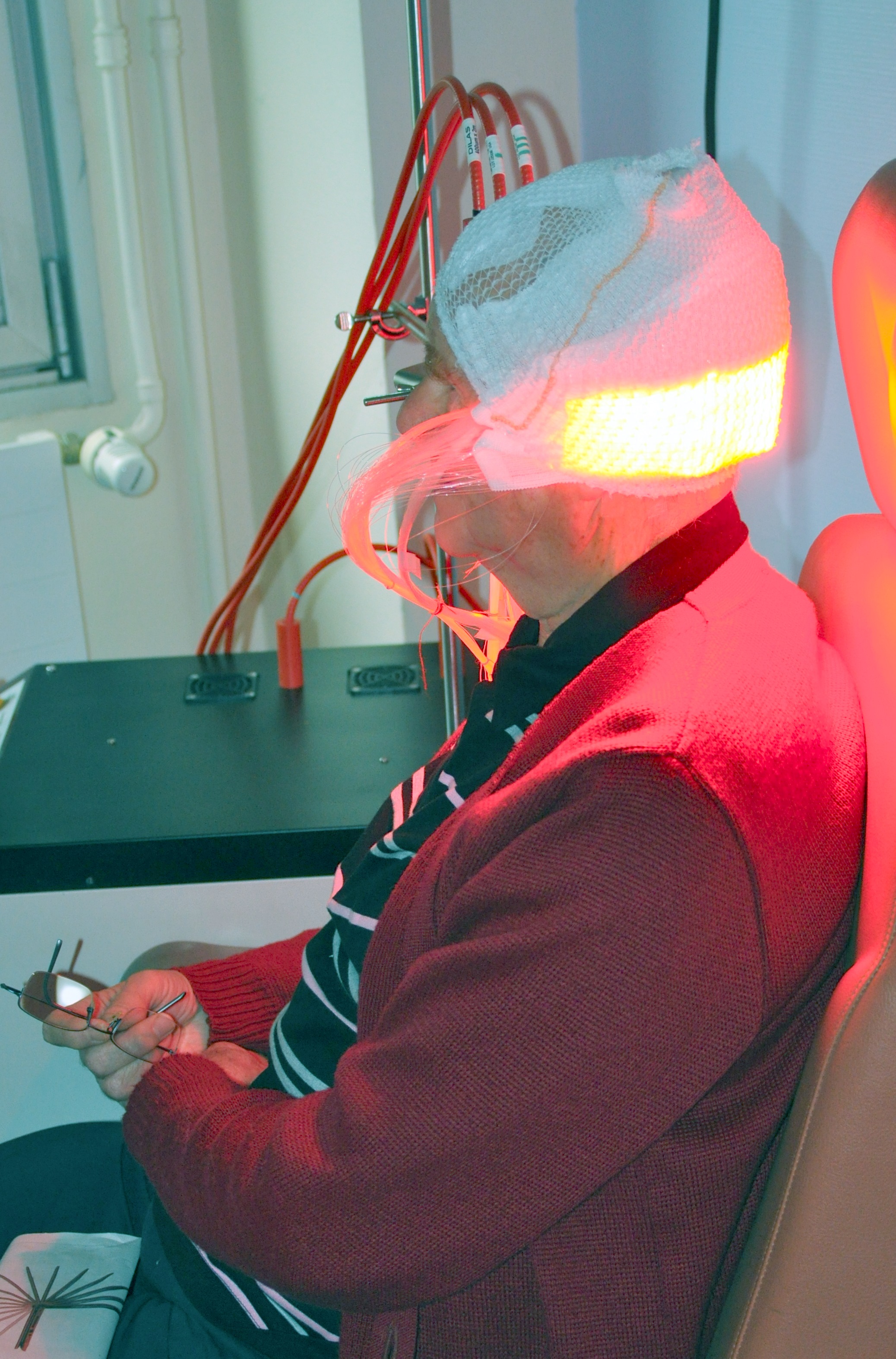A phase II study evaluating the non-inferiority of the device FLEXITHERALIGHT compared to the conventional photodynamic therapy (PDT)
Ongoing / closed: closed
Research type (rétro/prospective): prospective
Synopsis:
Actinic keratosis (AK) is characterized by pre-invasive, cancerous lesions on sun-exposed skin that negatively affect patient quality of life and may progress to invasive squamous cell carcinoma (SCC). If untreated, AK may either regress or progress to SCC, with significant morbidity. The most commonly used treatments for AK are cryotherapy, topical chemotherapy and, more recently, photodynamic therapy (PDT). This clinical study is part of a project that aims to create specific light-emitting fabrics (LEFs) that strongly improve the efficiency and reliability of PDT as a treatment for AK.
This study aims to compare the efficacy and tolerability of a new PDT protocol involving the Flexitheralight device (N-PDT) with the classic protocol involving the Aktilite CL 128 device (Galderma) (C-PDT) for the treatment of AK. All participants receive both protocols.
The primary objective of this study is to compare the lesion response rate after 3 months of N-PDT with C-PDT.
Secondary objectives are evaluations of pain and local tolerance during treatment, the clinical evolution of the subject's skin, and evaluations of patient quality of life and satisfaction.
The study is a split-face, intra-individual comparison of two PDT protocols. The total number of patients recruited is 42. Patients are exposed to a continuous red light with the Aktilite CL 128 device on one side of the face and to fractionated red illumination with the new device, Flexitheralight, on the other side of the face.
Males or females over the age of 18 years with a clinical diagnosis of at least 10 previously untreated, non-pigmented, non-hyperkeratotic, grade I and II AK lesions of the forehead and/or scalp (according to Olsen et al. JAAD 1991) are included and are recruited from the University of Lille Hospital. The patients come to the investigational centre for one treatment session (day 1), and they are followed up after 7 days, 3 months and 6 months. A second treatment session can be performed on day 111 in cases in which an incomplete response is observed at the 3 month follow-up.
Principal Investigator: Pr. Laurent MORTIER
Scientific coordinators: Pr. Serge MORDON
Study Sponsor: CHRU de Lille
Primary endpoint: Comparison of the lesion response rate 3 months after N-PDT (FLEXITHERALIGHT) with C-PDT (Aktilite CL128®).
Secondary endpoints:
- Treatment tolerability,
- Complete response rate after 6 months
- Cosmetic results,
- Patient quality of life and satisfaction.
Evaluation criteria of the primary endpoint: Total disappearance of each lesion, Number of patients presenting a 75% lesion reduction rate
Evaluation criteria of the secondary endpoints:
- Evaluation of pain (Visual Analogical Scale)
- Local tolerance (adverse event, serious adverse event, concomitant treatments)
- 4 point scale for the clinical assessment of the subject’s skin aspect (excellent, good, fair or poor)
- Dermatology Life Quality Index (DLQI)+Questionnaire of satisfaction.
Estimated enrollment: 42 patients
Clinicaltrials.gov identifier: NCT03076918
Contact and location:
Pr Laurent MORTIER, Clinique de Dermatologie - CHRU de LILLE, Rue Michel Polonovski, 59037 Lille Cedex
Phone: 03 20 44 41 93
Unité Inserm U1189 ONCOTHAI, Bâtiment Oncolille, Bd du Pr Jules Leclercq, 59000 Lille
Phone: 03.20.44.67.09
Extenal links: ANR project, website dedicated to the FLEXITHERALIGHT project




